Contests that change the world. 1567 - 2035
“A new star is burning in the sky. It was lit, of course, by bullies. ”
- Valentin Gaft

The history of technology contests is full of dramas, accomplishments and breakthroughs. Here and jumping out of burning airships, and stripping down to the underwear with the refusal of seat belts to reduce the weight of the device, and waiting for the payment of the prize for decades.
Finally, I finally waited for technological competitions to start in Russia and that I know part of the team personally, they did the STI Olympiad for schoolchildren ( 1 , 2 , 3 ), and did it normally.
')
I, in turn, hope to get rich (or find reckless magnates and figure out the fonic) until 2019 (it will be 100 years from the date of patenting a jetpack) and stir up the turbojet technology competition.
I dug up materials on contests for a series of articles, today a retrospective and a couple of little-known projects, the next publication will be about XPrize, then separately about the DARPA contests, and, possibly, IARPA.
(By the way, even on here, on Habré, there is a member of Google Lunar X PRIZE - 4110 )
1714
Longitude bonus ( longitude rewards )
Navigators faced with one "problem" - they could not determine the geographical longitude. Determining latitude is simple, by measuring the elevation angle of the Polar Star above the horizon. But to accurately determine the longitude for a long time was impossible. Mistakes led to the loss of ships, people and goods. The leading maritime powers — Spain, Portugal, Holland, France, and the United Kingdom — established serious prizes for solving the problem.
It is said that in 1567 the Spanish king Philip II instituted a prize, then in 1598 Philip III promised 6000 ducats. A little later, the States General (Netherlands) promised 10,000 florins for a solution.
In 1675, Robert Hooke tried to fuck £ 1,000 from the government of England for inventing spring clocks.
But nobody got the money, so "it does not count."
In 1714, the British Parliament established a special award for developing a method for determining longitude. The amount was fantastic at that time - 10,000 pounds (£ 1.45 million by today's standards) with an error of 60 nautical miles, 15,000 pounds (40 miles) and 20,000 pounds. In order to determine the longitude with such accuracy during the voyage to the West Indies, hours with an average daily departure of no more than three seconds were required (even though the watches at that time were considered particularly accurate if they had a minute hand).
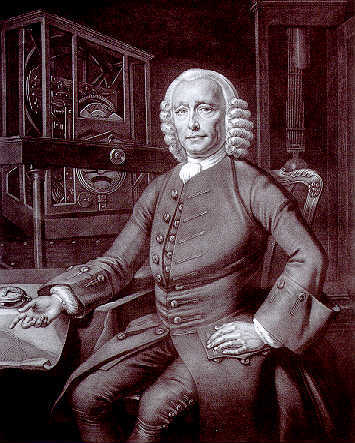
In 1728, a carpenter and self-taught watchmaker John Harrison joined the competition. He studied ship rolling for a couple of years and by 1735 finished the H1 watch.
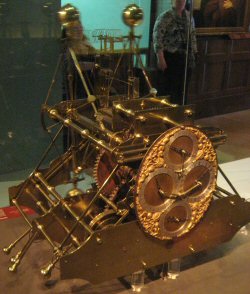
Huge and heavy (almost 40 kg) pendulum clock with an average daily departure of eight seconds showed an error of 150 miles longitude after sailing from London to Lisbon and back.
Similar results were shown in 1741 by the model H2. In 1749, the H3 model came to light, where Harrison applied a bimetallic plate in a pendulum for temperature compensation and cardan suspension to compensate for rolling. This watch was more accurate at sea than any other on land: the average daily departure was less than two seconds, and after 45 days of sailing, the accuracy of determining longitude was only 10 miles. However, by that time, the parliament had changed the conditions of the competition - now it required not only accuracy, but also compactness.

Harrison in 1760 introduced a new model, the H4, - no longer pendulum, but with balance.
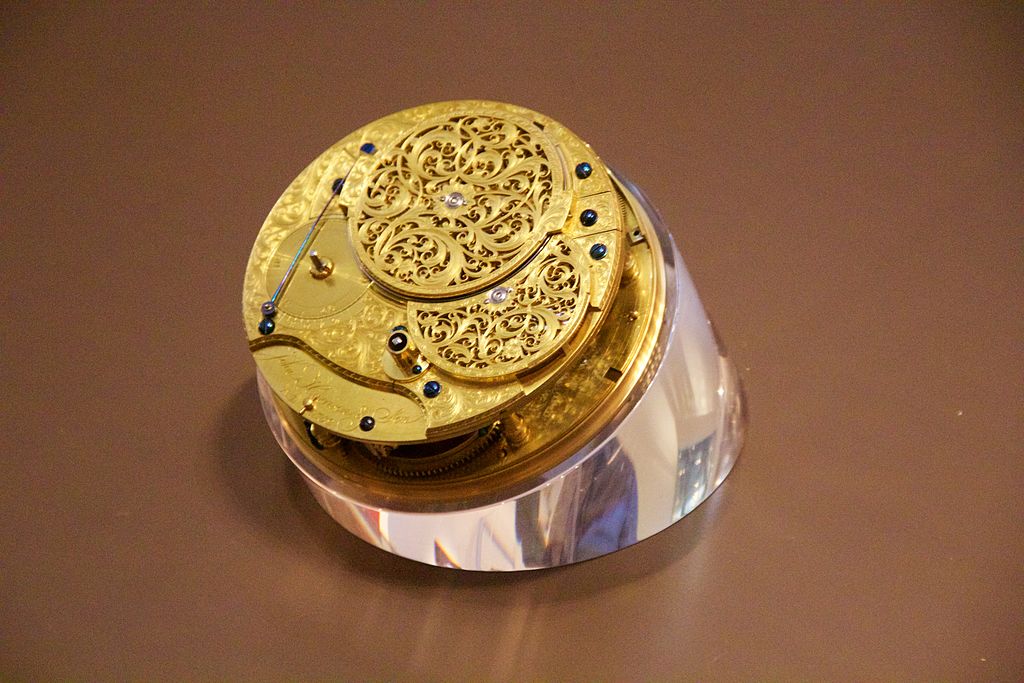
Captain
The clock had a diameter of 12 centimeters and was checked during two voyages to the West Indies - in 1761 and 1764, the departure at the same time was five seconds for the three months of travel. But after that, the parliament was not in a hurry to pay the money. The fact is that in 1757, a British naval officer, John Campbell, developed the design of a sextant - a tool for measuring the angular distances between celestial bodies. Parliament hoped that using the tables of the Royal Observatory and the Werner method, the longitude could be calculated “for free” (Campbell was in the royal military service, and the prize was not meant for him). Harrison watches were more convenient, and in the end in March 1776 - to his 83rd birthday - he was paid a deserved prize. Other Longitude Award Winners are unknown.

1795

In 1795, Napoleon announced a reward of 12,000 francs to the one who thought out how to store food for as long as possible.
In May 1809, French cook Nicolas Upper, after 15 years of experience, sent a letter to the Minister of the Interior, in which he proposed a new way of preserving food. Instead of salting and drying used up to that time, Upper used a conservation method that seemed to him similar to the storage of wine. In 1810, Napoleon personally paid the prize to Nicolas Apper and ordered the quartermaster service to adopt the “appertization” process. The conservation method developed by Upper was that the preserved product was heated without oxygen to a temperature of 110-130 degrees Celsius. This made it possible to significantly extend the life of the products. Subsequently, the method of conservation of Uppert was improved due to the appearance of cans and the invention of pasteurization.
1900
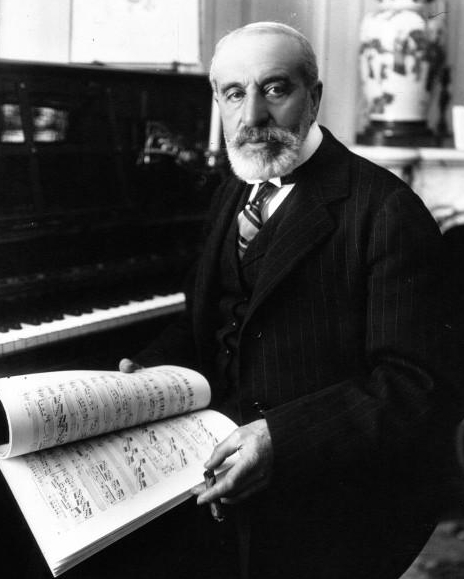
Henri Deutsch de la Mert (“The Oil King of Europe”) - a French “oilman” and philanthropist, sponsored several competitions to speed up the development of aviation.
In 1900, he announced a prize of 100 thousand francs ( Deutsch de la Meurthe prize ) to anyone who could fly an airship or airplane by flying 11 km from Saint-Claude’s park to the Eiffel Tower and return to the starting point in less than 30 minutes.
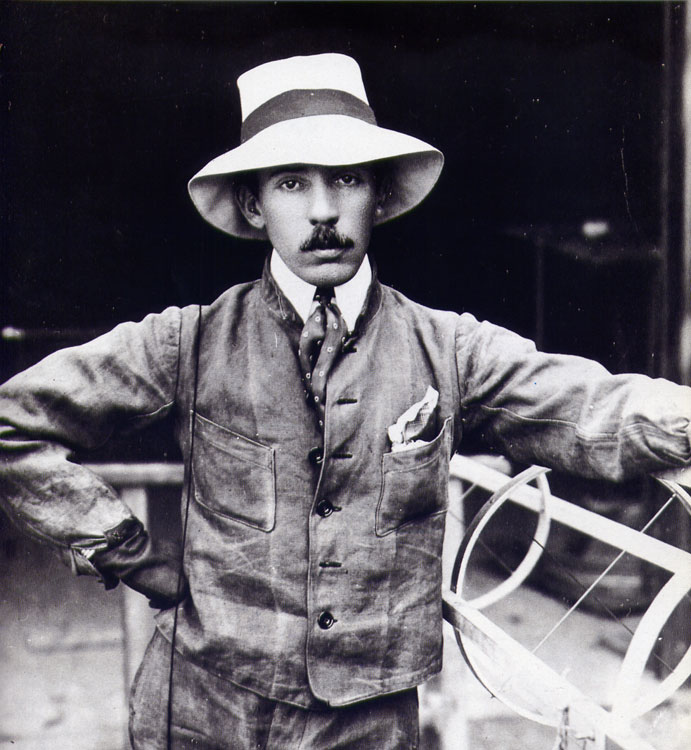
Alberto Santos-Dumont, son of the coffee king, aviation pioneer.
In July 1901, Santos-Dumont joined the battle for the prize in his airship No. 5. The balloon rose into the air, but, rounding the tower, stopped as the engine stalled, and was carried by the wind to the park. During the second attempt in August of the same year, a hydrogen leak occurred on the airship. The airship began to decline sharply and collided with the roof of the Trocadero Hotel. There was a powerful explosion. Santos Dumont hung on the keel of his airship and was shot by firefighters. On the same day, August 8, Santos-Dumont began to develop plans for the construction of the airship No. 6.
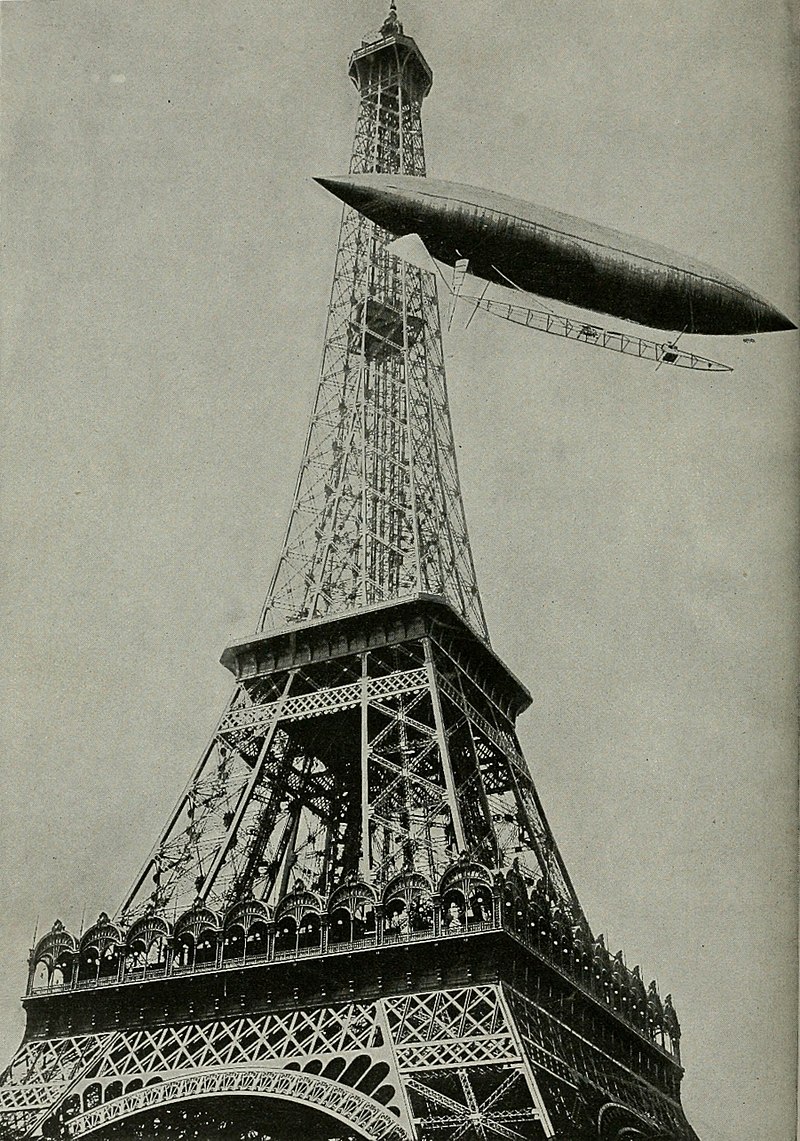
On October 19, 1901, due to bad weather, only five of the twenty-five members of the commission arrived on the next flight of Santos Dumont, among them was Deutsch de la Mert. After the chronometer signal, the airship No. 6 took off, reached the Eiffel Tower, 9 minutes after the start of the flight, rounded it and headed back. The audience applauded, many left the houses on the streets.

Traffic has stopped. Santos Dumont had only 20 minutes to make a return trip against the wind with the risk of damaging the engine. Before the expiration of the deadline, there were only 5 minutes left. Already above Bois, the airship lost altitude. In the last minutes, the ball rocked close to the finish line. It took 29 minutes 30 seconds after the start. With the effort, he was able to level him at a height of 120 meters and lower him until the mechanics caught the control rope. Chronometers showed 30 minutes 29 seconds.
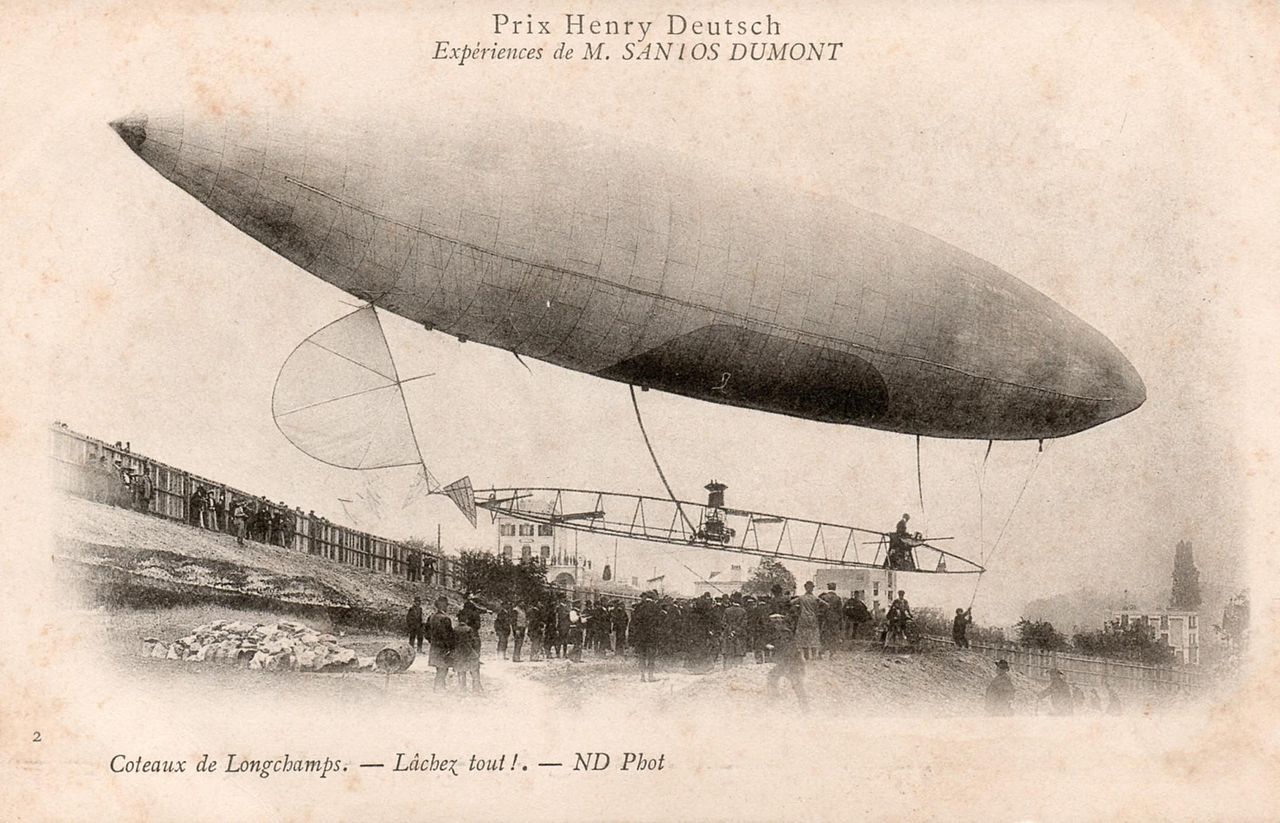
The commission was not unanimous in its opinion. One member of the commission said that Santos-Dumont did not win the prize, as he landed a few seconds after the deadline.
On November 4, the commission met at the Aero Club. Santos Dumont was declared the winner by 14 votes to nine.
1904
Grand prix d'aviation
In 1904, the same Henri Deutsch de la Mert and Ernest Archdikon created a prize fund of 50,000 francs ( Grand Prix d'Aviation ), which was to be given to the first pilot, who traveled a distance of one kilometer along a circular route on a heavier-air apparatus.

Henri Farman (Henri Farman) , in the past, bicycle and racing driver, abandoned his old hobbies for the sake of aviation.
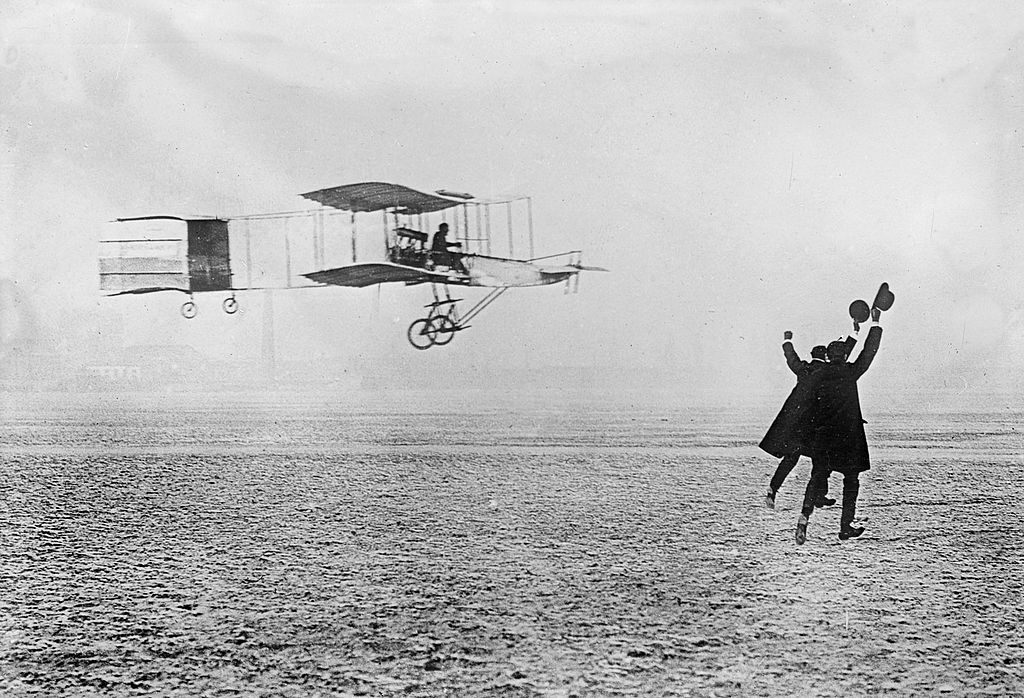
In 1907, Farman purchased the aircraft and set a number of European records on it. He first took to the air on September 30, 1907, and on January 13, 1908, Farman flew 1 km in 1 minute 28 seconds along a closed route and received the Deutsch-Archdikon Award.
1919
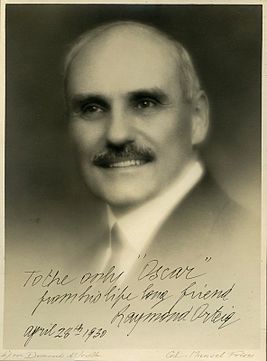 Raymond Desire Orteig (1870 - June 6, 1939) - American businessman of French origin, owner of 2 hotels “Hotel Lafayette” and “Brevoort Hotel” in Greenwich Village in Lower Manhattan.
Raymond Desire Orteig (1870 - June 6, 1939) - American businessman of French origin, owner of 2 hotels “Hotel Lafayette” and “Brevoort Hotel” in Greenwich Village in Lower Manhattan.Being a wealthy New York businessman, on May 19, 1919, Orteig at a solemn meeting in honor of Eddie Rickenbecker , the most effective American ace of World War I, offered $ 25,000 in prize money to the first pilot, who within 5 years would make a non-stop flight from New York York to Paris. Despite the fact that at that time it was a rather generous offer, it is believed that he practically did not risk anything, considering that at that time there was not a single aircraft in the world with which one could carry out a transatlantic flight. ( Wikipedia )
The announcement of this prize Orteyg inspired post-war Franco-American cooperation. The result was nine independent attempts to fly across the Atlantic. Trying to win it, several pilots were killed or injured. In 1924, Orteig extended the prize fund of his name.
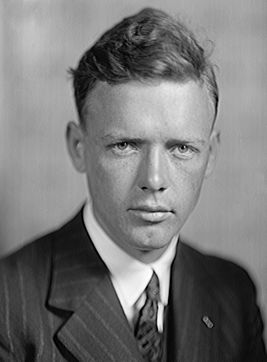 The transatlantic flight managed to accomplish the 25-year-old Charles Lindberg alone , who on May 20, 1927, started at Garden City, Long Island, New York and landed at Le Bourget near Paris on May 21, thus becoming the owner of the Raymond prize Orteiga and the national hero of the United States.
The transatlantic flight managed to accomplish the 25-year-old Charles Lindberg alone , who on May 20, 1927, started at Garden City, Long Island, New York and landed at Le Bourget near Paris on May 21, thus becoming the owner of the Raymond prize Orteiga and the national hero of the United States.Prior to Lindberg, two English pilots — John Alcock and Arthur Brown — on the Newfoundland-Clifden (Ireland) route in 1919 made a transatlantic flight from west to east for the first time. ( Wikipedia )
Lindberg decided to take part in the competition, but the preparation of the flight required money. He convinced nine entrepreneurs in St. Louis to help with financing. At his request, Ryan Airlines from San Diego launched a special single-engine monoplane aircraft. Lindberg himself participated in the development of the project. He called the car "The Spirit of St. Louis ." ( Wikipedia )
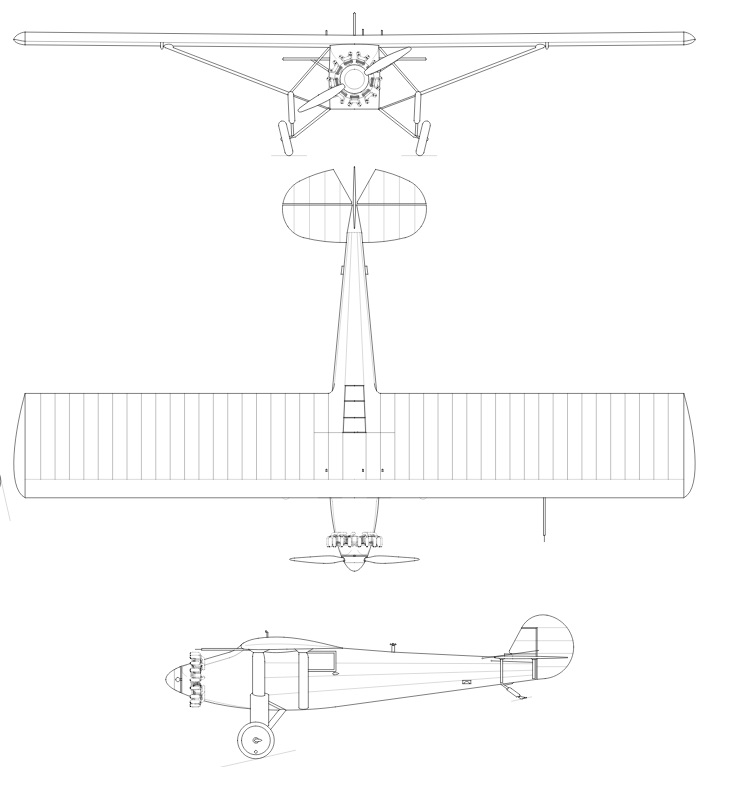
On May 10–11, 1927, Lindberg tested an airplane flying from San Diego to New York, with an overnight stay in St. Louis. The flight took 20 hours 21 minutes. The length of the route was 5800 km.
May 20 at 7:52 am Lindberg starts from Roosevelt Field (Garden City, Long Island, New York) and May 21 at 5:21 pm (Paris time - at 10:21 pm) lands at Le Bourget.
For the transatlantic flight, Charles Lindberg was awarded the Flight Merit Cross and became the first person to receive this award, and he was also awarded the FAI Golden Aviation Medal. ( Wikipedia )

Lindberg on the background of the plane Spirit_of_St._Louis
In 1927, Lindberg publishes the book "We", which tells in detail about his transatlantic flight. On behalf of the Daniel Guggenheim Foundation for the Development of Aeronautics, Lindberg flies through the USA. Then Lindberg learned about the research of rocket pioneer Robert Goddard, a professor of physics at Clark University, and persuaded the Guggenheim family to support Goddard's experiments. These experiments later led to the creation of rockets, satellites and the beginning of space travel. Lindberg also worked for several airlines as a technical consultant. ( Wikipedia )
1959
Kremer Prize - a prize of £ 50,000, established in 1959 by the British industrialist Henry Kremer for the first stable flight of the device on muscular thrust.
On August 23, 1977, the Gossamer Condor, built by Paul MacCready and Peter Lissaman, not only took off vertically, but also drew an infinity sign in the air, proving that such devices could maneuver in the air.

MacCready Gossamer Condor
Two years later, in 1979, McCready received another Kremer Award, this time in the amount of £ 100,000, when the Gossamer Albatross aircraft created by him, using human muscular strength, crossed the English Channel and flew from England to France - the first time in history of humanity.
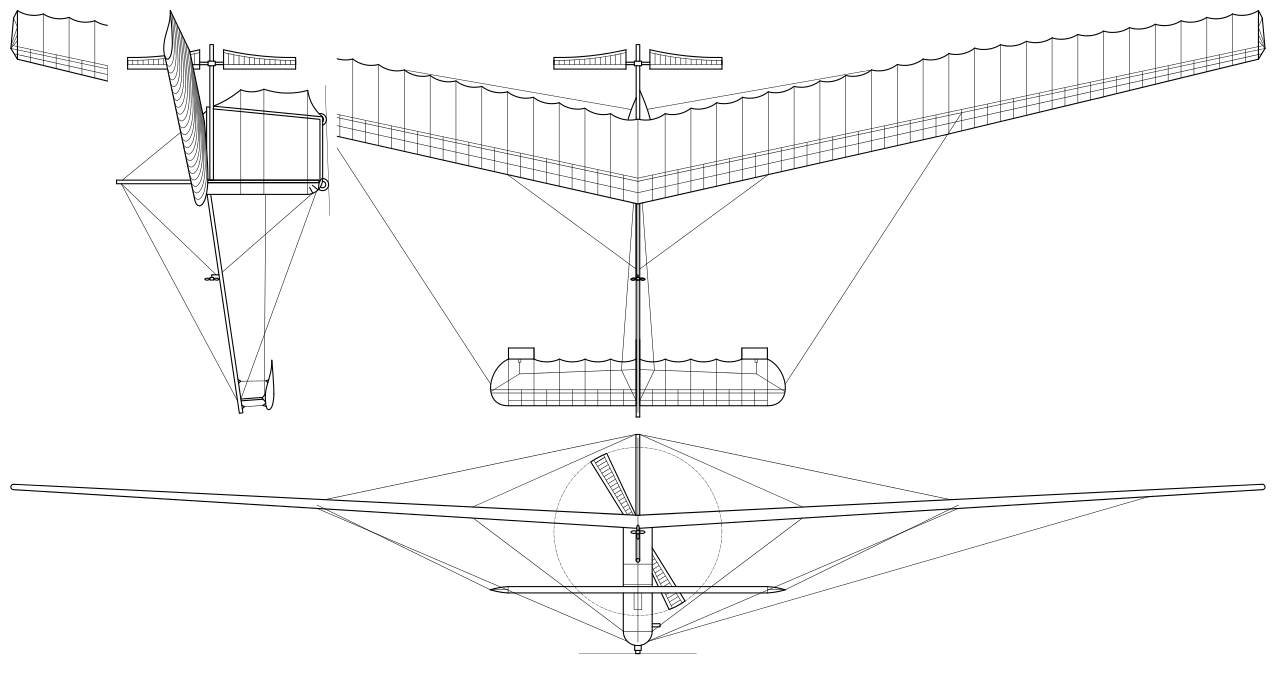
In both cases, the "muscle" was piloted by the American professional cyclist Brian Allen. He covered the distance of 35,820 meters in 2 hours 49 minutes with an average speed of 12.7 km / h. The device, on which the flight range record was set, was of an aircraft type: a prop screw was used as a propulsion unit. The engine was the same muscular legs of a cyclist, pedaling.
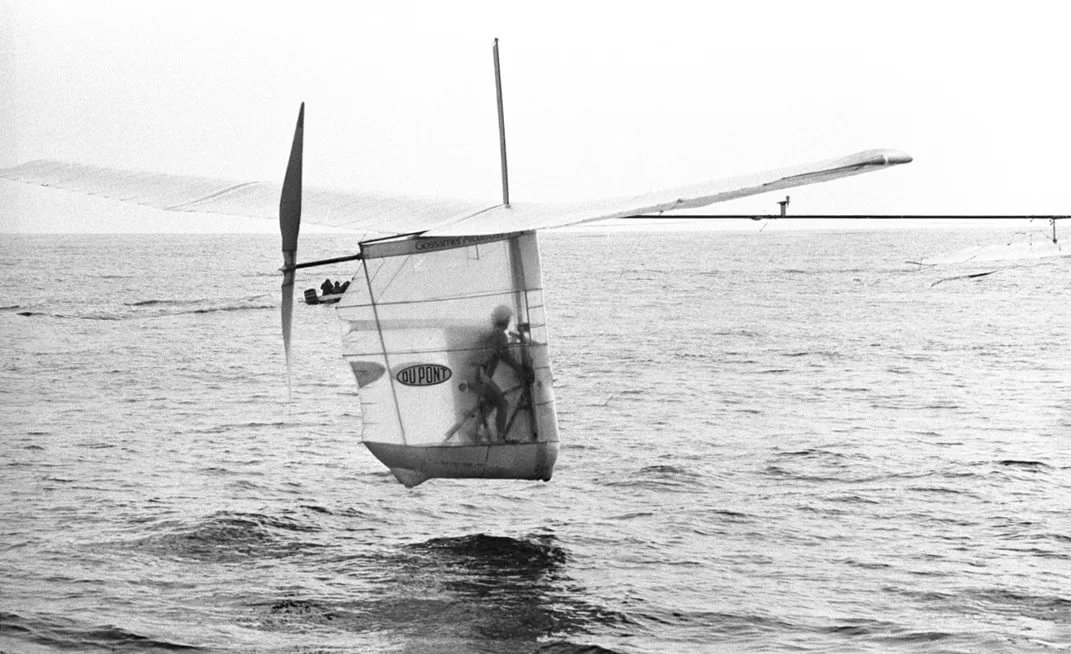
The Gossamer Albatross built by Makkridi (carbon fiber was used instead of aluminum in its frame) flew 35 km and crossed the English Channel, spending 2 hours and 49 minutes to do so.
Now there are 3 more untapped nominations of Kremer’s prize, worth £ 150,000:
- 26 Mile Marathon, you need to fly in less than an hour (£ 50,000),
- Agility competition (£ 100,000),
- Local competitions for young people (up to 18 years) in the UK.
1980

Sikorsky Prize - was established in 1980 by the American Helicopter Society to encourage the development of a helicopter-type muscular fly that satisfies a number of stringent requirements: the device had to be in the air for at least 60 seconds and rise to a height of at least three meters, while not moving further from the starting point than 10 meters.
In 2013, 33 years after the establishment of the prize, he was officially awarded to a team of students and graduates of the University of Toronto called AeroVelo , who built the Atlas machine, which made a flight that meets these requirements.

Atlas at the peak of its historic flight on June 13, 2013. The car remained airborne for 64 seconds and reached a height of 3.33 meters.
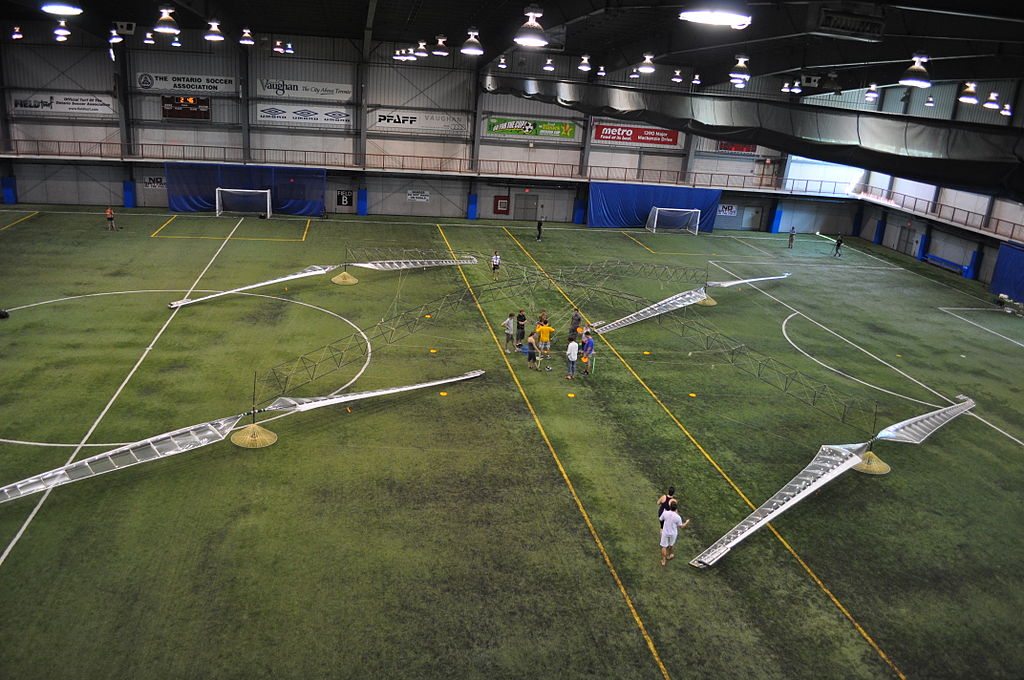
During the lifetime of the prize, more than 20 teams developed and built helicopters on muscular rigging, but only five of them ever took off. ( Wikipedia )
2003
M Prize is a scientific competition organized to draw attention to the possibilities of new technologies to slow down or even reverse the damage caused by the aging process, while maintaining health and mental abilities. The prize fund is from 1.5 million to 4 million dollars.

The Methuselah Foundation is a medical nongovernmental organization dedicated to the financing and support of scientific research aimed at a radical extension of human life. The foundation is headed by the famous gerontologist Aubrey de Gray .
The object of the project is the mouse ( Mus musculus type ). Winners are researchers who have managed to significantly extend their lives. Any methods of laboratory exposure are permitted, provided that this does not impair the mental and physical condition of the mice.
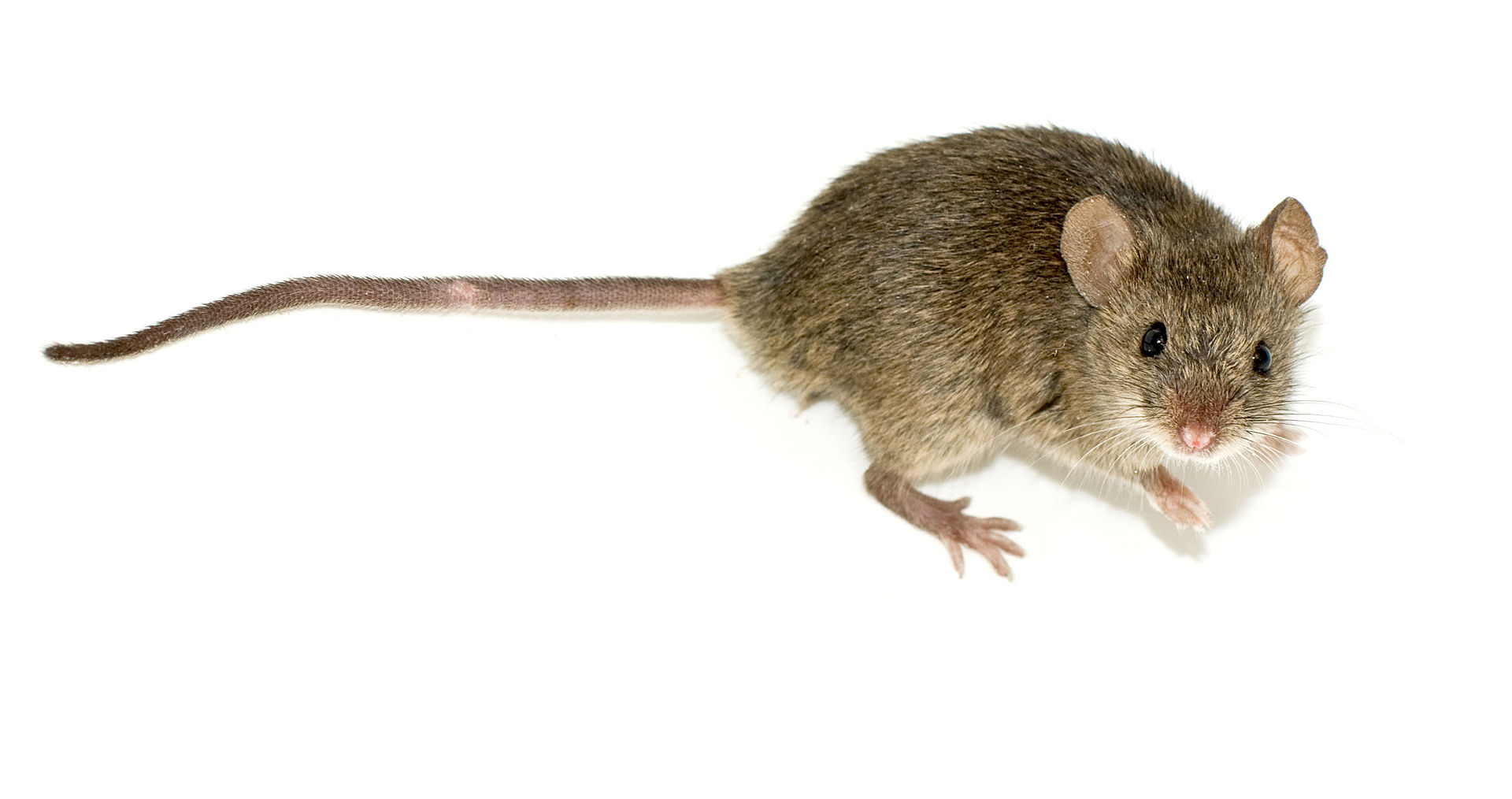
The award consists of two parts:
- Longevity Prize - an absolute record of life expectancy.
- Rejuvenation Prize - rejuvenation of adult mice.
The average life expectancy of mice is 2 years. Here are some examples of long-lived mice that received the Methusela Foundation Award:
- Mouse Yoda has lived for about 4 years, which corresponds to 136 human years
- Charlie Mouse lived 1551 days, breaking the record of his predecessor (Yoda)
- The GHR-KO 11C mouse lived 1819 days — about 200 years by human standards.
2008
The L Prize (aka the Bright Tomorrow Lighting Prize) is a competition initiated by the United States Department of Energy with the aim of “encouraging lighting manufacturers to develop a high-quality, high-performance solid-state lighting fixture to replace an ordinary incandescent lamp.
The prize fund was for the replacement of 60 W - $ 10 million, for the replacement of PAR 38 - $ 5 million.
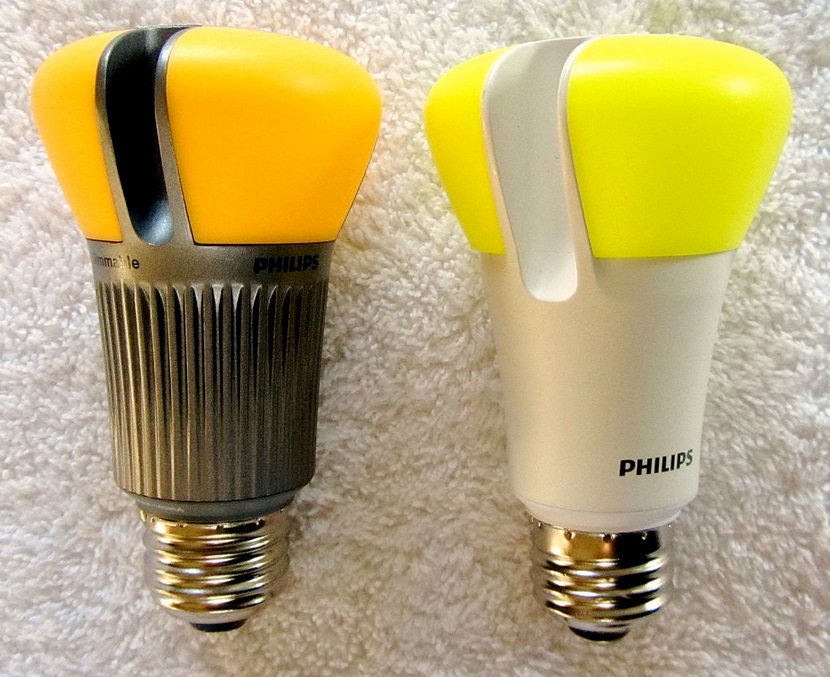
2014

H-Prize - competitions in the field of hydrogen energy.
There are three nominations:
- 4 prizes of $ 1 million are awarded every two years to those who improve the generation, storage, distribution and utilization of hydrogen.
- 1 prize of $ 4 million for a working hydrogen car prototype with excellent performance.
- The $ 10 million main prize is awarded only once for the entire program to the one who makes a technological breakthrough.
Continuing about XPrize, DARPA, IARPA follows ...
2018, Russia
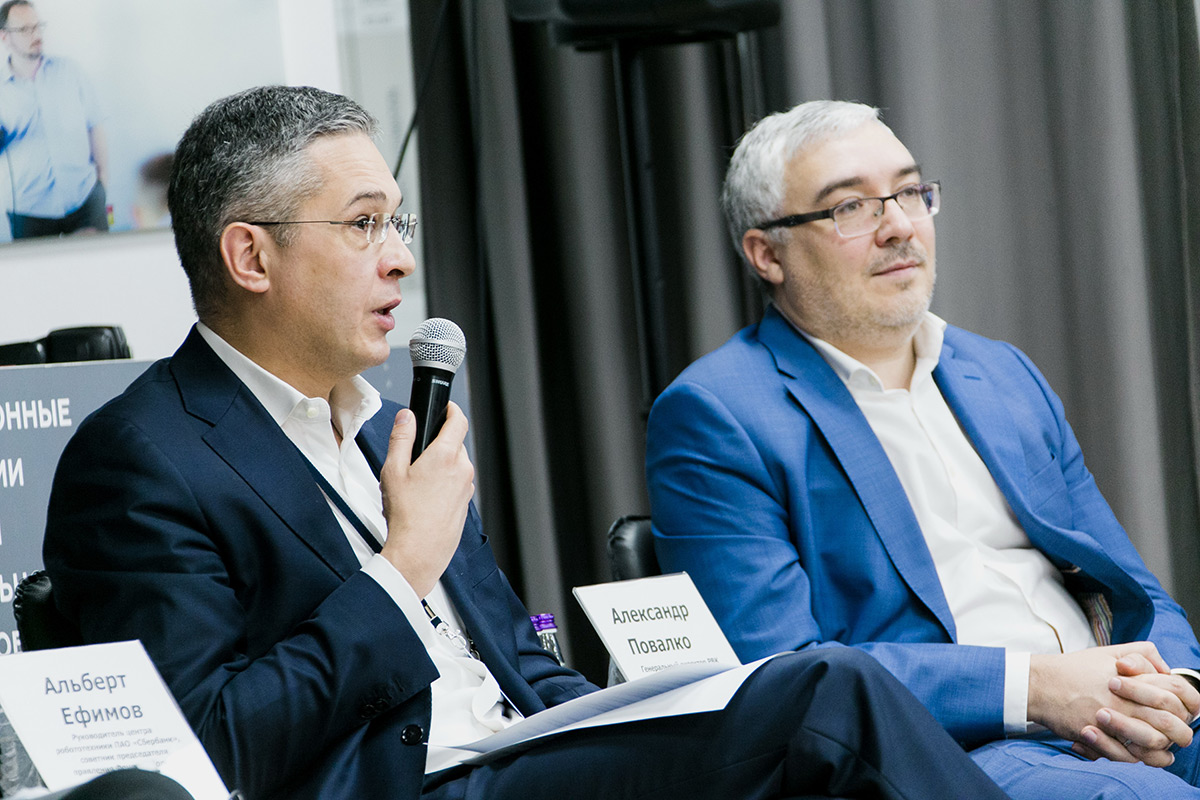
In July, we started accepting applications for Russia's first Up Great technology competitions. The concept of the competitions was created on the model of XPrize, Darpa Grand Challenge, and other international “challenge” engineering competitions. The prize fund of Up Great competitions in Russia will amount to 375 million rubles. The event supports and finances the state. They are conducted as part of the National Technology Initiative. Competition operator - Russian Venture Company.
Technological contests impose minimum requirements on the formal composition of participants. In fact, anyone can try their hand at solving a competitive task. The main informal “entry threshold” is a set of knowledge, competencies and know-how in a certain technological area, without which it is impossible to approach the solution of a competitive task.
The technological barrier is :
- Significant unsolved technological problem that prevents the emergence of a new product in the new market
- No one in the world has achieved, but the desired level of capabilities (characteristics) of the technology, upon reaching which there is a sharp increase in demand for this technology
Russian and foreign engineering teams, universities, research organizations and engineering bureaus can compete in Up Great contests. If the development team wins, the cash prize is divided equally between them.
Funding . Developments are carried out at their own expense. The rights to the results of intellectual activity belong to the participants.
In July, three Up Great technology contests started:
- “Winter City” Development of an unmanned vehicle capable of driving autonomously in winter and at different times of the day, in compliance with the Rules of the Road Traffic of the Russian Federation (hereinafter referred to as traffic rules) in the urban infrastructure, with the possible absence of a road marking, low road visibility canvases, in the presence of road traffic and traffic interference, at the level of the average driver.Read moreParticipants in the Winter City contest should develop an unmanned vehicle. "Stuffing" should allow the machine to move confidently and safely in any climate and road conditions. Both in the afternoon, and at night, in the conditions of a city traffic jam and along the highway, at destruction of a roadbed, etc.
Now the overwhelming majority of tests of unmanned technology in the world are carried out in controlled conditions and predictable weather conditions — a dry track, good visibility. This is due to both the available level of technology development and objective factors - most startups in the industry appear in the US, where the climate is predominantly dry and hot.
However, in order to achieve high levels of autonomy, it is necessary to test cars even in extreme conditions, including with limited visibility and uneven road surface. One of the first to solve this problem was the American company Ford, which in the winter of 2016 tested the technology of driving in snow conditions at the landfill in Michigan. In 2017, an American startup DriveAI tested an unmanned vehicle in the rain, at night, on ordinary roads. Testing unmanned cars in the rain is also involved in the company Waymo. The current level of technology allows the drone to move in light rain, but an emergency stop occurs when it rains for safety.
The final tests of the Up Great contest will be held in the winter of 2019 at a specially equipped training ground. The participating vehicles will have to travel 50 km in less than 3 hours, independently plotting a route taking into account the presence of other vehicles at the test site, observing traffic rules and not provoking other participants to violations. On the track, additional difficulties will be created, such as frost, snow, lack of road, traffic congestion. To win, you must go the route faster than others, while demonstrating the high quality of driving. The winning team will receive 175 million rubles. - “The first element. Earth ” creation of power plants on hydrogen fuel cells, comparable in efficiency to traditional energy sources in vehicles, for medium vehicles, i.e. for cars and motorcycles, small craft, small aircraft and heavy unmanned aerial vehicles.Read moreParticipants in the other two Up Great contests are to create hydrogen fuel cells for air and ground vehicles.
Hydrogen has the highest internal energy per unit of weight compared to other fuels, while it is environmentally friendly - the by-product of the reaction in the fuel cell is pure water. The Toyota Mirai passenger car produces about 6 liters of water per hydrogen mileage per 100 kilometers. And no greenhouse gases. Compared with lithium-ion batteries, hydrogen fuel cells do not require charging and have a longer service life.
Research in the field of hydrogen energy today is carried out by the world's leading auto giants - Toyota, Honda, Hyundai. In April 2017, Japanese Prime Minister Shinzo Abe announced the intentions of his government to gradually abandon hydrocarbon fuels and switch to a hydrogen economy. According to him, by 2030, there should already be 800,000 cars with hydrogen engines in the country.
According to the terms of the contest - “The first element. Land "participants must mount a power plant with a capacity of 15 kW in a volume of 150 liters on an unmanned vehicle platform, and then take part in the race. The winner will be the one who will last longer than others on the track. The teams will get a platform that includes an electric motor, a chassis, a control system - that is, a “box” where they will need to fit the entire system. - “The first element. Air ”the creation of energy installations on hydrogen fuel cells, comparable in efficiency to traditional energy sources on vehicles, for small unmanned vehicles, i.e. for land, flying and floating drones of small sizes.Read moreParticipants must install the most efficient and lightweight power unit based on 1.3 kW fuel cells on the multipopter platform presented by the competition organizers, after which it must be held in the air for at least three hours. The one who will last longer in the air will win. Teams will have to provide any source of hydrogen, within which the pressure in any point should not exceed three hundred atmospheres, and the temperature - 100 degrees Celsius - these are the safety requirements.
Future contests:
- Comprehensive Turing Test. Artificial Intelligence.
- Kibatletika. Development of assistive technology.
- Competition to them. Stakhanov. Increase productivity.
- Control technology swarm drones.
- Your competition.
Sources
- 10 little-known premium engine progress
- Amazing Muscles of the Suell Airfield
- XPrize Russian: how are national technology competitions
- How are innovations changing the world? Overview of technology contests
- ASI, RVC and the Skolkovo Foundation organize new national and international technology competitions in the logic of the NTI
- Technological contests NTI
- Technological Competition STI "Winter City"
- Technological Competition STI "Hydrogen Energy Fuel Cell"
- What are the benefits of technological contests?
- The main task of the department is the development and promotion of technology contests and initiatives
- Inventor Alberto Santos-Dumont (1873 - 1932)

About #philtech
#philtech (technology + philanthropy) is an open, publicly described technology that aligns the standard of living of as many people as possible by creating transparent platforms for interaction and access to data and knowledge. And satisfying the principles of filteha:
1. Opened and replicable, not competitive proprietary.
2. Built on the principles of self-organization and horizontal interaction.
3. Sustainable and prospective-oriented, and not pursuing local benefits.
4. Built on [open] data, not traditions and beliefs.
5. Non-violent and non-manipulative.
6. Inclusive, and not working for one group of people at the expense of others.
Philtech's social technology startups accelerator is a program of intensive development of early-stage projects aimed at leveling access to information, resources and opportunities. The second stream: March – June 2018.
Chat in Telegram
A community of people developing filtech projects or simply interested in the topic of technologies for the social sector.
#philtech news
Telegram channel with news about projects in the #philtech ideology and links to useful materials.
Subscribe to the weekly newsletter
1. Opened and replicable, not competitive proprietary.
2. Built on the principles of self-organization and horizontal interaction.
3. Sustainable and prospective-oriented, and not pursuing local benefits.
4. Built on [open] data, not traditions and beliefs.
5. Non-violent and non-manipulative.
6. Inclusive, and not working for one group of people at the expense of others.
Philtech's social technology startups accelerator is a program of intensive development of early-stage projects aimed at leveling access to information, resources and opportunities. The second stream: March – June 2018.
Chat in Telegram
A community of people developing filtech projects or simply interested in the topic of technologies for the social sector.
#philtech news
Telegram channel with news about projects in the #philtech ideology and links to useful materials.
Subscribe to the weekly newsletter
Source: https://habr.com/ru/post/419587/
All Articles